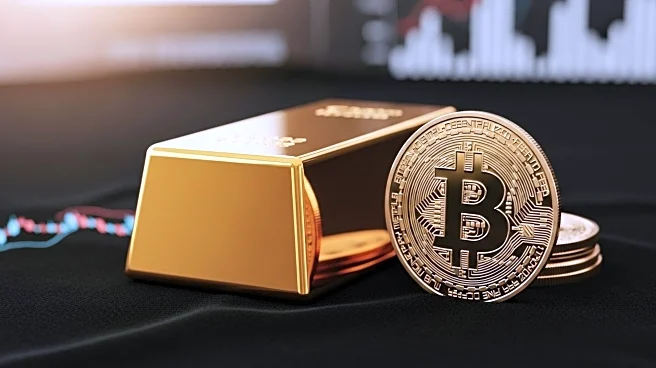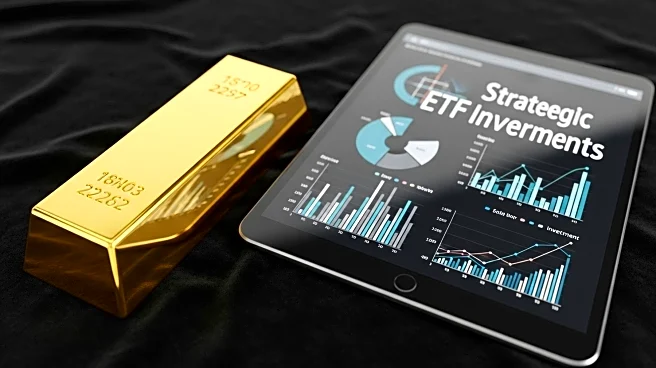What is the story about?
What's Happening?
In 2025, gold prices have reached unprecedented levels, surpassing $3,500 per ounce. This surge is attributed to a combination of macroeconomic and geopolitical factors, including heightened trade tensions and the weakening of the U.S. dollar. Central banks have increased their gold purchases, signaling a shift in reserve management strategies. As a result, gold has become a critical asset for portfolio resilience. Exchange-traded funds (ETFs) such as SPDR Gold Shares (GLD) and iShares Gold Trust (IAU) offer investors a cost-effective and liquid means to gain exposure to gold's price movements without the logistical challenges of storing physical bullion.
Why It's Important?
The rise in gold prices highlights its role as a hedge against systemic risks, particularly in an era of global economic uncertainty. Investors are increasingly turning to gold ETFs for their liquidity and tax efficiency, making them an attractive option for portfolio diversification. The strategic allocation of gold in investment portfolios can help mitigate risks associated with currency devaluation and geopolitical instability. However, over-allocation to gold poses risks, as it generates no income and relies solely on price appreciation. Experts recommend a balanced approach, with a 5-15% allocation to gold depending on risk tolerance and financial goals.
What's Next?
Investors should monitor macroeconomic signals such as inflation metrics, trade developments, and central bank policies to time their entries and exits in gold investments. Historical seasonality suggests that August to October is a strong period for gold, driven by cultural demand spikes and portfolio rebalancing. While central bank demand and U.S. fiscal fragility provide a structural tailwind for gold, potential Federal Reserve tightening and competition from income-generating assets could dampen its appeal. Investors must integrate gold into a diversified portfolio to navigate the uncertainties of the global economy.
Beyond the Headlines
Gold's correlation with equities has increased, reflecting its role as a broader inflation hedge rather than a pure safe-haven asset. This shift underscores the importance of treating gold as part of a diversified investment strategy rather than a standalone solution. The evolving dynamics of gold investment highlight the need for disciplined allocation and strategic timing to maximize returns and fortify portfolios against economic volatility.
AI Generated Content
Do you find this article useful?














